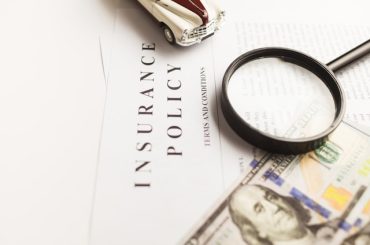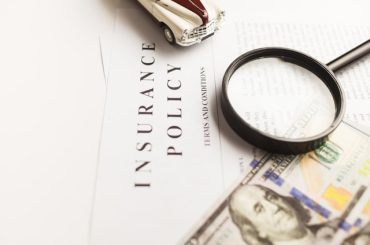Personal finance strategies can help you manage your money effectively, save for the future, and achieve your financial goals. Here are some key strategies to consider:
Step 1: Create a budget
Creating a budget is the foundation of practical personal finance management. Here’s a detailed guide to help you create a practical and manageable budget:
- Track Income and Expenses
- Identify All Sources of Income:
- Primary Income: Include your salary, wages, or any regular income from employment.
- Secondary Income: Account for income from side jobs, freelancing, investments, rental properties, etc.
- Irregular Income: Include occasional earnings like bonuses, gifts, or windfalls.
- Record Expenses:
- Fixed Expenses: Monthly expenses that remain constant, such as rent/mortgage, insurance premiums, car payments, and subscriptions.
- Variable Expenses: Monthly expenses vary, including groceries, utilities, transportation, and entertainment.
- Discretionary Spending: Non-essential spending like dining out, hobbies, and leisure activities.
- Annual or Irregular Expenses: Include costs that occur less frequently, such as property taxes, vacations, and home repairs.
- Identify All Sources of Income:
- Categorize Your Spending
- Essentials: Expenses necessary for survival and daily living, such as housing, utilities, groceries, transportation, and healthcare.
- Savings and Debt Repayment: Contributions to savings accounts, retirement funds, and debt payments.
- Non-Essentials: Discretionary spending on entertainment, dining out, shopping, and hobbies.
- Set Limits and Goals
- Allocate Funds: Assign a specific amount of money to each category based on your priorities and financial goals.
- Set Savings Goals: Determine how much you want to save each month for emergency funds, retirement, and other financial goals.
- Debt Reduction Goals: Plan how much you can allocate towards paying off Debt each month.
- Choose a Budgeting Method
- 50/30/20 Rule: Allocate 50% of your income to needs, 30% to wants, and 20% to savings and debt repayment.
- Envelope System: Use cash for different spending categories and place it in labeled envelopes. Once the money is gone, there will be no more spending in that category.
- Zero-Based Budgeting: Every dollar of your income is assigned a purpose, ensuring that your income minus expenses equals zero.
- Apps and Software: To track and manage your budget, use budgeting tools and apps like Mint, YNAB (You Need a Budget), or Excel spreadsheets.
- Monitor and Adjust
- Regular Check-Ins: Review your budget weekly or monthly to ensure you are on track and make adjustments as needed.
- Adjust for Changes: Modify your budget to reflect changes in income, expenses, or financial goals.
- Stay Flexible: Be prepared to reallocate funds from one category to another if unexpected expenses arise.
- Automate Where Possible
- Automate Savings: Set up automatic transfers to your savings account to ensure consistency.
- Bill Payments: Use automatic bill payment services to avoid late fees and manage your cash flow efficiently.
- Evaluate and Reflect
- Review Spending Habits: Analyze your spending patterns to identify areas where you can cut back or reallocate funds.
- Celebrate Progress: Acknowledge milestones and progress towards your financial goals to stay motivated.
- Make Adjustments: Continuously refine your budget to better suit your lifestyle and financial objectives.
Step 2: Build an Emergency Fund
Building an emergency fund is a crucial component of personal financial stability. It acts as a financial safety net for unexpected expenses or income loss. Here’s a detailed guide on how to build and maintain an emergency fund:
- Understand the Importance of an Emergency Fund
- Financial Security: Provides a cushion against unexpected events such as job loss, medical emergencies, car repairs, or major home repairs.
- Avoid Debt: Helps you avoid high-interest Debt from credit cards or loans during emergencies.
- Peace of Mind: Reduces stress and anxiety about financial uncertainties.
- Set a Savings Goal
- Determine the Amount: Aim to save 3-6 months’ living expenses. If your job is unstable or your income fluctuates, consider saving up to 9-12 months’ worth.
- Calculate Monthly Expenses: Include essential costs such as housing, utilities, food, transportation, insurance, and minimum debt payments.
- Create a Savings Plan
- Start Small: Begin with a manageable goal, such as $500 or $1,000, and gradually increase your target.
- Break it Down: Divide your goal into smaller, achievable milestones. For example, if you aim to save $6,000 in a year, save $500 monthly.
- Automate Your Savings
- Automatic Transfers: Set up automatic transfers from your checking account to your savings account on a regular basis (e.g., every payday).
- Direct Deposit: If your employer offers direct deposit, allocate a portion of your paycheck directly into your emergency fund.
- Reduce Expenses and Increase Income
- Cut Unnecessary Spending: Identify non-essential expenses that you can reduce or eliminate.
- Negotiate Bills: Contact service providers to negotiate lower rates on bills such as insurance, cable, and phone.
- Side Hustles: Consider taking on part-time work or freelance gigs to boost your income.
- Choose the Right Savings Account
- High-Yield Savings Account: Look for accounts that offer higher interest rates to grow your emergency fund faster.
- Accessibility: Ensure the account is easily accessible in case of an emergency but not so easily accessible that you’re tempted to dip into it for non-emergencies.
- No Fees: Choose an account with no monthly maintenance fees or minimum balance requirements.
- Replenish and Maintain
- Use Only for Emergencies: Resist the temptation to use the fund for non-essential purchases.
- Replenish Quickly: If you need to use your emergency fund, prioritize rebuilding it as soon as possible.
- Regular Contributions: Continue to make regular contributions even after reaching your initial goal to account for inflation and increasing living expenses.
- Monitor and Adjust
- Periodic Review: Regularly review your emergency fund to ensure it meets your needs, especially if your expenses or financial situation changes.
- Adjust Savings Goals: Increase your emergency fund goal if your monthly expenses increase, or you anticipate higher risks (e.g., starting a family or changing jobs).
Step 3: Manage Debt
Managing Debt effectively is essential for maintaining financial health and achieving long-term financial goals. Here’s a detailed guide on how to manage Debt:
- Assess Your Debt Situation
- List All Debts: Create a detailed list of all your debts, including credit cards, student loans, auto loans, mortgages, personal loans, and other obligations.
- Include Key Details: Note the balance, interest rate, minimum monthly payment, and due date for each Debt.
- Understand Different Types of Debt
- Secured Debt is loans backed by collateral, such as mortgages and auto loans. These often have lower interest rates but carry the risk of losing the collateral if you default.
- Unsecured Debt: Loans not backed by collateral, such as credit cards and personal loans. These typically have higher interest rates.
- Revolving Debt: Debt that you can borrow from repeatedly, like credit cards.
- Installment Debts are loans that are repaid over a fixed period with regular payments, such as student loans or mortgages.
- Prioritize Your Debts
- High-Interest Debt: First, focus on paying off debts with the highest interest rates, as they cost you the most over time.
- Smallest Balances: Alternatively, some prefer the “snowball method,” which involves first paying off the smallest balances to build momentum.
- Create a Debt Repayment Plan
- Budget Allocation: Determine how much money you can allocate toward monthly debt repayment after covering essential expenses.
- Debt Snowball Method: Pay off the smallest Debt first while making minimum payments on the rest. Once the smallest Debt is paid off, apply that payment amount to the next smallest Debt.
- Debt Avalanche Method: Pay off the Debt with the highest interest rate first while making minimum payments on the rest. Once the highest-interest Debt is paid off, apply that payment amount to the next highest-interest Debt.
- Consider Debt Consolidation
- Balance Transfer Credit Cards: Transfer high-interest credit card balances to a card with a lower interest rate, ideally with an introductory 0% APR period.
- Debt Consolidation Loans: Take out a personal loan to pay off multiple debts. This can simplify payments and potentially lower your interest rate.
- Home Equity Loans or Lines of Credit: You can use the equity in your home to consolidate Debt, but be aware that you may lose your home if you default.
- Negotiate with Creditors
- Lower Interest Rates: Contact your creditors to request a lower interest rate or more favorable terms.
- Payment Plans: Negotiate a more manageable payment plan if you struggle to keep up with payments.
- Settlement Offers: In some cases, creditors may agree to settle for a lump sum payment that is less than the total amount owed.
- Use Windfalls Wisely
- Tax Refunds and Bonuses: Apply any unexpected windfalls, such as tax refunds, bonuses, or gifts, directly to your Debt.
- Extra Income: Consider using income from side jobs or freelance work to pay down Debt faster.
- Avoid New Debt
- Credit Card Usage: Use credit cards responsibly, paying off the balance in full each month to avoid interest charges.
- Emergency Fund: Build and maintain an emergency fund to cover unexpected expenses and avoid relying on credit cards.
- Seek Professional Help
- Credit Counseling: Work with a credit counseling agency to create a debt management plan and get advice on managing Debt.
- Debt Settlement Companies: Be cautious with debt settlement companies, as they may charge high fees and impact your credit score.
- Bankruptcy: Consider bankruptcy as a last resort, but understand the long-term consequences for your credit and financial future.
- Monitor and Adjust
- Regular Review: Regularly review your debt repayment plan and make adjustments as needed.
- Celebrate Milestones: Acknowledge and celebrate small victories along the way to stay motivated.
Step 4: Save and Invest for the Future
Saving and investing for the future are critical steps to ensure long-term financial stability and growth. Here’s a detailed guide on how to effectively save and invest for your future:
- Set Clear Financial Goals
- Short-Term Goals: Goals you plan to achieve within 1-3 years, such as building an emergency fund, saving for a vacation, or buying a car.
- Medium-Term Goals: Goals you plan to achieve within 3-7 years, like saving for a down payment on a house or funding a wedding.
- Long-Term Goals: Goals that are 7+ years away, such as retirement, children’s education, or purchasing a second home.
- Create a Savings Plan
- Automate Savings: Set up automatic transfers from your checking account to your savings account to ensure consistent savings.
- High-Yield Savings Account: Use high-yield savings accounts to earn more interest on your savings.
- Savings Rate: Aim to save at least 20% of your income, but adjust based on your financial goals and situation.
- Build an Emergency Fund
- Initial Goal: Start with a small, manageable goal, such as $1,000.
- Ultimate Goal: Save 3-6 months’ living expenses to cover unexpected emergencies.
- Invest in Long-Term Growth
- Retirement Accounts:
- 401(k) or 403(b): Employer-sponsored retirement plans. Contribute enough to get the full employer match if available.
- IRA (Individual Retirement Account): You can choose between a Traditional IRA (tax-deferred growth) and a Roth IRA (tax-free growth).
- Diversified Portfolio: To manage risk, spread your investments across different asset classes (stocks, bonds, real estate).
- Regular Contributions: Invest consistently, monthly or quarterly, to take advantage of dollar-cost averaging.
- Retirement Accounts:
- Understand Investment Options
- Stocks: Ownership shares in a company. Potential for high returns but also higher risk.
- Bonds: Loans to governments or corporations that pay interest over time. Generally lower risk than stocks.
- Mutual Funds: Pooled funds from multiple investors to buy a diversified portfolio of stocks, bonds, or other securities.
- ETFs (Exchange-Traded Funds): Similar to mutual funds but traded like stocks on an exchange.
- Real Estate: Investing in property to earn rental income or capital appreciation.
- Other Assets: These include commodities, cryptocurrencies, and other alternative investments.
- Tax-Advantaged Accounts
- Tax-Deferred Accounts: Contributions are tax-deductible, and taxes are paid upon withdrawal (e.g., Traditional IRA, 401(k)).
- Tax-Free Accounts: Contributions are made with after-tax dollars, but withdrawals are tax-free (e.g., Roth IRA).
- Taxable Accounts: No tax benefits, but more flexibility and fewer restrictions compared to retirement accounts.
- Diversification and Risk Management
- Asset Allocation: Determine the right mix of assets based on your risk tolerance, time horizon, and financial goals.
- Rebalancing: Periodically adjust your portfolio to maintain your desired asset allocation.
- Risk Tolerance: Understand your comfort level with investment risk and choose investments accordingly.
- Stay Informed and Review Regularly
- Continuous Learning: Educate yourself on personal finance and investment strategies through books, courses, and reputable financial websites.
- Regular Reviews: Review your financial goals, savings, and investment performance at least annually and make adjustments as needed.
- Adjust for Life Changes: Update your savings and investment strategies to reflect major life events such as marriage, children, job changes, or nearing retirement.
Step 5: Plan for Major Expenses
Planning for major expenses is crucial for maintaining financial stability and avoiding unnecessary Debt. Here’s a detailed guide on how to effectively plan for significant financial outlays:
- Identify Major Expenses
- Common Major Expenses: These may include buying a house, purchasing a car, education costs, weddings, vacations, home renovations, or starting a business.
- Categorize by Timeframe: Classify these expenses as short-term (within 1-3 years), medium-term (3-7 years), or long-term (7+ years).
- Set Specific Goals
- Define Each Goal: Be clear about what you are saving for, the total amount needed, and the timeline.
- Break Down the Cost: Understand the full cost, including any additional expenses (e.g., closing costs for a home, maintenance costs for a car).
- Create a Savings Plan
- Determine the Amount Needed: Calculate the total cost of each major expense.
- Set Monthly Savings Targets: Divide the total amount by the number of months until you need the money to determine how much you need to save each month.
- Choose the Right Savings Vehicle
- Short-Term Goals: Use high-yield savings accounts, money market accounts, or short-term certificates of deposit (CDs).
- Medium-Term Goals: Consider balanced mutual funds or bond funds for a mix of growth and stability.
- Long-Term Goals: Invest in a diversified portfolio of stocks and bonds to benefit from potential higher returns over time.
- Automate Your Savings
- Automatic Transfers: Set up automatic transfers from your checking account to your savings account to ensure consistent savings.
- Direct Deposit: If your employer offers direct deposit, allocate a portion of your paycheck directly to your savings account.
- Reduce Expenses and Increase Savings
- Cut Unnecessary Costs: Identify areas where you can reduce spending and redirect those funds towards your savings goals.
- Increase Income: Consider side hustles, freelancing, or part-time jobs to boost your savings.
- Monitor and Adjust
- Regular Review: Periodically review your progress towards your savings goals and adjust your plan as needed.
- Adjust Savings Rate: If you receive a raise or bonus, consider increasing your monthly savings contribution.
- Use Windfalls Wisely
- Tax Refunds and Bonuses: Allocate any unexpected windfalls, such as tax refunds or work bonuses, directly to your savings for significant expenses.
- Gifts and Inheritances: Use gifts or inheritance money to boost your savings.
- Avoid High-Interest Debt
- Save First, Spend Later: Instead of using credit cards or loans for significant expenses, save the required amount in advance.
- Emergency Fund: Maintain an emergency fund to cover unexpected costs so you don’t have to dip into your savings for significant expenses.
- Seek Professional Advice
- Financial Planner: Consider consulting a financial planner to help create a detailed savings plan and investment strategy tailored to your goals.
- Educational Resources: Continuously educate yourself on financial planning and saving strategies through books, courses, and reputable financial websites.
Step 6: Insurance and Protection
Insurance and protection are critical components of a sound personal finance strategy, helping to safeguard your financial well-being against unexpected events. Here’s a detailed guide on the various types of insurance and protection strategies:
- Health Insurance
- Importance: Covers medical expenses, reducing the financial burden of healthcare costs.
- Types of Plans:
- HMO (Health Maintenance Organization): You must use a network of doctors and get specialist referrals.
- PPO (Preferred Provider Organization): Offers more flexibility in choosing healthcare providers but at a higher cost.
- HDHP (High-Deductible Health Plan): Lower premiums but higher deductibles; often paired with Health Savings Accounts (HSAs).
- Coverage Considerations:
- Premiums: Monthly cost of the insurance plan.
- Deductibles: Amount you pay out-of-pocket before insurance kicks in.
- Copayments and Coinsurance: Your share of the expenses after meeting the deductible.
- Network: List of doctors and hospitals covered by the plan.
- Life Insurance
- Purpose: Provides financial support to your dependents during your death.
- Types of Life Insurance:
- Term Life Insurance: Coverage for a specific period (e.g., 10, 20, or 30 years). Lower premiums and straightforward benefits.
- Whole Life Insurance: Permanent coverage with a savings component that builds cash value. Higher premiums but lifetime coverage.
- Universal Life Insurance: Permanent coverage with flexible premiums and a cash value component.
- Factors to Consider:
- Coverage Amount: This should be sufficient to cover income replacement, debts, and future expenses (e.g., education costs for children).
- Policy Term: Choose a term that aligns with your financial responsibilities for term insurance.
- Disability Insurance
- Purpose: Provides income replacement if you cannot work due to illness or injury.
- Types of Disability Insurance:
- Short-Term Disability: Covers a portion of your income for a short period (typically 3-6 months).
- Long-Term Disability: Covers a portion of your income for an extended period (typically several years or until retirement age).
- Key Features:
- Benefit Amount: Percentage of your income that will be replaced (usually 50-70%).
- Elimination Period: Waiting period before benefits begin.
- Benefit Period: Length of time benefits are paid out.
- Homeowners/Renters Insurance
- Homeowners Insurance: Covers your home and personal property against damage or loss and provides liability protection.
- Coverage Components:
- Dwelling Coverage: Repairs or rebuilds your home if covered perils damage it.
- Personal Property Coverage: Covers your belongings inside the home.
- Liability Coverage: Protects you if someone is injured on your property.
- Additional Living Expenses: Covers costs if you need to live elsewhere while your home is repaired.
- Coverage Components:
- Renters Insurance: Covers personal property and liability for renters.
- Personal Property Coverage: Replace your belongings if they’re damaged or stolen.
- Liability Coverage: Protects you if you’re responsible for injury to others or damage to their property.
- Homeowners Insurance: Covers your home and personal property against damage or loss and provides liability protection.
- Auto Insurance
- Purpose: Provides financial protection against accidents, theft, and other vehicle-related incidents.
- Types of Coverage:
- Liability Coverage: Covers damages to others if you’re at fault in an accident.
- Collision Coverage: Covers repairs to your vehicle after an accident.
- Comprehensive Coverage: Covers non-collision-related damage (e.g., theft, vandalism, natural disasters).
- Uninsured/Underinsured Motorist Coverage: Protects you if you’re in an accident with an uninsured or underinsured driver.
- Policy Features:
- Deductibles: Amount you pay out-of-pocket before insurance covers the rest.
- Coverage Limits: Maximum amount the insurance company will pay out per incident.
- Umbrella Insurance
- Purpose: Provides additional liability coverage beyond your homeowners, auto, or renters insurance limits.
- Coverage: Protects your assets and covers legal fees if you’re sued for damages that exceed your existing policy limits.
- Identity Theft Protection
- Purpose: Helps recover your identity and finances if you become a victim of identity theft.
- Services: This may include credit monitoring, fraud alerts, identity restoration services, and reimbursement for expenses related to identity theft.
- Long-Term Care Insurance
- Purpose: Covers the cost of long-term care services, such as nursing home care, home health care, and assisted living.
- Considerations:
- Daily Benefit Amount: The policy will pay per day for care.
- Benefit Period: Length of time the benefits will be paid.
- Elimination Period: Waiting period before benefits begin.
Step 7: Tax Planning
Tax planning is analyzing your financial situation to ensure tax efficiency, which can help you minimize tax liabilities and maximize savings. Here’s a detailed guide on effective tax planning strategies:
- Understand Your Tax Bracket
- Tax Brackets: Identify which federal and state tax brackets you fall into based on your income.
- Marginal vs. Effective Tax Rate: Understand the difference between your marginal tax rate (the rate on your last dollar of income) and your effective tax rate (the average rate you pay on all your income).
- Maximize Tax-Advantaged Accounts
- Retirement Accounts:
- 401(k) and 403(b): Contribute to employer-sponsored retirement plans. Contributions are tax-deferred, reducing your taxable income for the year.
- IRA (Individual Retirement Account): Contribute to a Traditional IRA for tax-deferred growth or a Roth IRA for tax-free growth.
- Health Savings Accounts (HSAs): Contribute to an HSA if you have a high-deductible health plan. Contributions are tax-deductible, and withdrawals for qualified medical expenses are tax-free.
- Flexible Spending Accounts (FSAs): Contribute to an FSA to pay for medical or dependent care expenses with pre-tax dollars.
- Retirement Accounts:
- Take Advantage of Tax Deductions
- Standard Deduction vs. Itemizing: Determine whether to take the standard deduction or itemize deductions based on which option provides greater tax benefits.
- Common Deductions:
- Mortgage Interest: Deduct interest paid on a mortgage for your primary residence.
- State and Local Taxes (SALT): Deduct state and local income, sales, and property taxes up to a limit of $10,000.
- Charitable Contributions: Deduct donations to qualified charitable organizations.
- Medical Expenses: Deduct out-of-pocket medical expenses that exceed a certain percentage of your adjusted gross income (AGI).
- Education Expenses: Deduct student loan interest or qualified tuition and fees.
- Utilize Tax Credits
- Earned Income Tax Credit (EITC): A credit for low- to moderate-income working individuals and families.
- Child Tax Credit: A credit for each qualifying child under 17.
- Education Credits: The American Opportunity Tax Credit (AOTC) and Lifetime Learning Credit (LLC) for education expenses.
- Energy Credits: Credits for making energy-efficient improvements to your home.
- Optimize Investment Income
- Capital Gains and Losses:
- Long-Term vs. Short-Term: Hold investments for more than a year to benefit from lower long-term capital gains tax rates.
- Tax-Loss Harvesting: Offset gains by selling investments at a loss to reduce taxable income.
- Qualified Dividends: Invest in assets that pay qualified dividends, taxed at a lower rate than ordinary income.
- Capital Gains and Losses:
- Plan for Retirement
- Required Minimum Distributions (RMDs): Plan for RMDs from retirement accounts starting at age 72 to avoid penalties.
- Roth Conversions: Consider converting a Traditional IRA to a Roth IRA to benefit from tax-free withdrawals in retirement.
- Estate Planning
- Gifting: Utilize the annual gift tax exclusion to transfer wealth without incurring gift taxes.
- Trusts: Set up trusts to manage and protect assets, potentially reducing estate taxes.
- Beneficiary Designations: Ensure beneficiary designations on retirement accounts and life insurance policies are up-to-date to avoid probate and minimize estate taxes.
- Business Tax Planning
- Deductions for Business Expenses: Deduct ordinary and necessary business expenses, such as office supplies, travel, and equipment.
- Qualified Business Income (QBI) Deduction: Deduct up to 20% of qualified business income for pass-through entities like sole proprietorships, partnerships, and S-corporations.
- Depreciation and Section 179: Deduct the cost of business property and equipment using depreciation or Section 179 expensing.
- Retirement Plans for Small Business Owners: Set up retirement plans like SEP IRAs, SIMPLE IRAs, or solo 401(k)s to benefit from tax-deferred growth and deductions.
- Tax-Efficient Charitable Giving
- Donor-Advised Funds: Contribute to a donor-advised fund to receive an immediate tax deduction and distribute funds to charities over time.
- Qualified Charitable Distributions (QCDs): If you are 70½ or older, make charitable donations directly from your IRA to reduce taxable income.
- Stay Informed and Seek Professional Advice
- Stay Updated: Keep abreast of tax laws and regulations changes that may affect your tax planning strategies.
- Consult a Tax Professional: Work with a CPA or tax advisor to develop a comprehensive tax plan tailored to your financial situation and goals.











